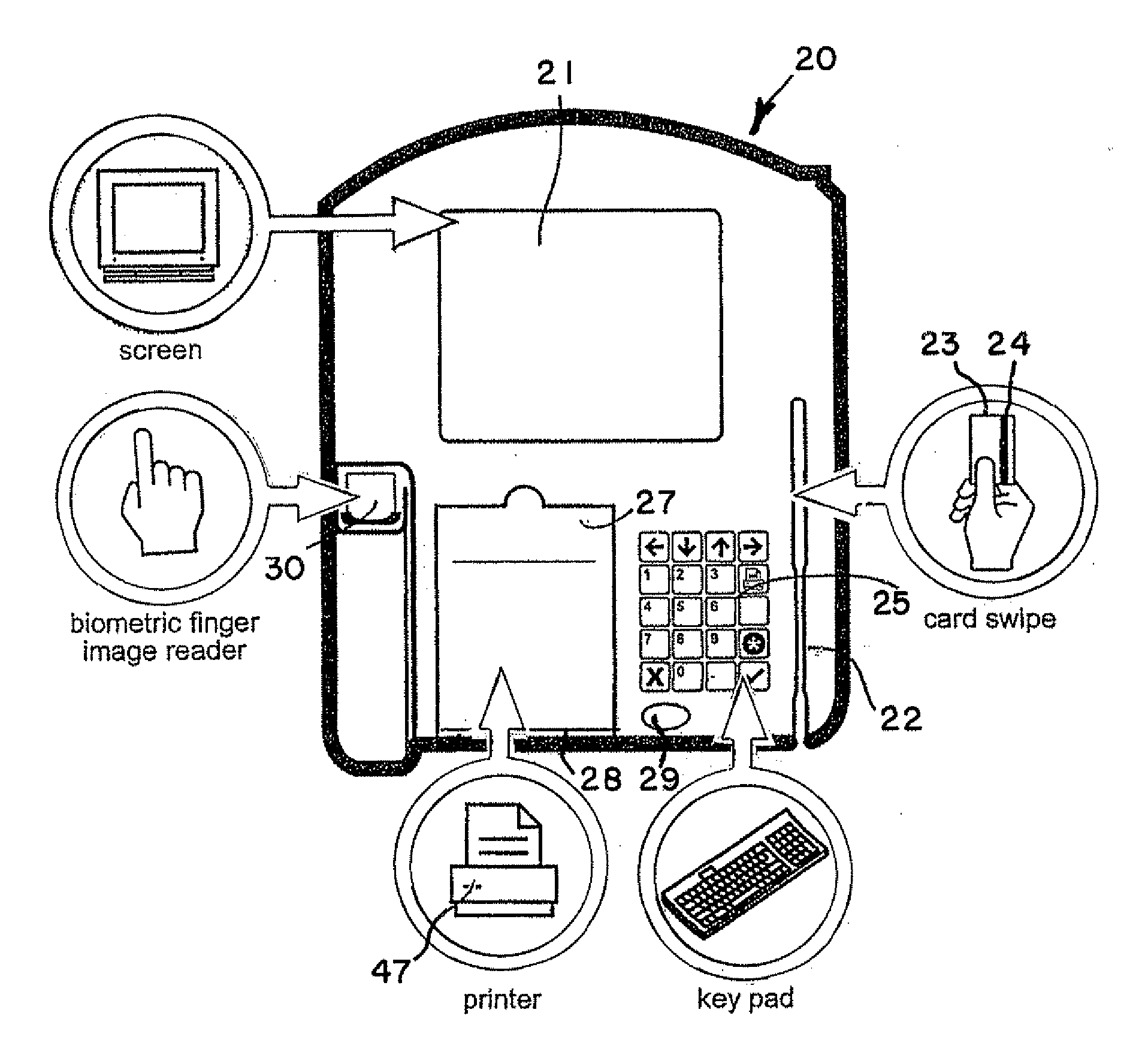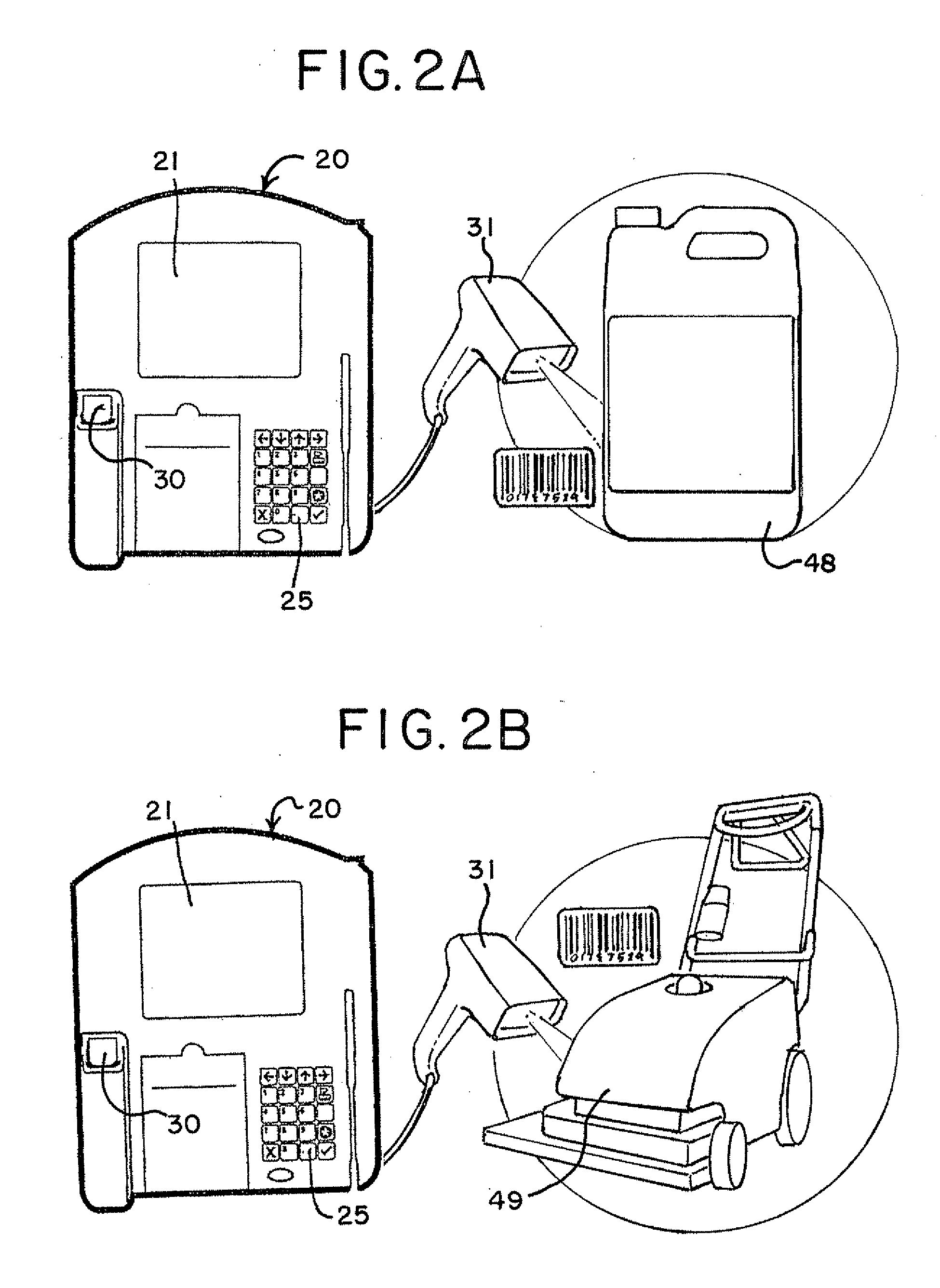Thus, if a user's
fingerprint is not matched, the system displays a
text message telling the user that access was denied, or emits an audible tone, such as a
high pitch buzzing sound, that can be annoying.
However, it becomes impractical when securing a remote building or when tracking remote employees where a human
security guard or a human manager is not present at the location where the employee is being authenticated.
For example, if the employee is not authenticated, there may not be another employee available to perform the work expected from the non-authenticated employee.
A further problem with remote
authentication of employees or persons is that, due to weather changes such as
extreme cold, rain or heat, human fingerprints may shrink or dilate.
This creates situations where the person using the
fingerprint authentication
machine may be unable to be authenticated, although they have previously been registered onto the system.
This causes
frustration on the user's side and calls for a “second opinion” biometric matching methodology.
However, such devices are often expensive to install and operate, and most such devices require an upfront investment in hardware,
software and installation services.
Unfortunately, in remote locations that only require one or two employees, installing such a prior art biometric time
clock does not make much economic sense.
This is primarily because the cost of installing and operating a remote biometric time
clock may actually exceed the profits generated from a remote location with only one or two employees.
One of the main problems of using a telephone timekeeping systems to track remote employees at remote locations, is that employers do not have the ability to truly confirm the real identity of the remote employee, especially in a low cost way.
Although such methods establish that “an” employee called from the work location, such methods still fail to guarantee the identity of the employee.
Thus, although IVR-based telephone timekeeping systems are accurate in identifying the location of the call, such systems still can not eliminate “buddy
punching”.
However, smaller companies which can not afford to spend large capital on equipment or do not have access to significant amounts of
bank financing, find it almost impossible to perform their work by using business machinery and equipment even though they may be willing to pay more for usage of the machinery, rather than making a buying commitment.
While a few companies offer equipment leasing or rental, such model usually does not truly tie real-time usage of the machinery with the fees paid.
Such approach is expensive, paper intensive and subject to
human error.
The installation process for a
time and attendance or an all purpose terminal may be the most costly component of the system.
That is, in some instances, the cost of installation may actually exceed the price of the terminal, especially if travel by qualified personnel to a remote location is required.
One of the problems encountered when servicing low wage, non-English speaking employees is their lack of technology sophistication in using a
time and attendance system.
Furthermore, due to the distributed nature of the labor environment, other significant issues are encountered, such as that employees move from one remote location to another without much advance notice.
In many cases employees quit or give managers little notice that they will be late.
As a result, managers have to move their distributed labor around continuously.
Thus, the registration of new employees becomes difficult since where they were originally registered is not necessarily where they will end up working.
As a result, the employee's cash flow is limited and he / she has to wait for more than two weeks to receive
payment for his / her work, not because he / she has not earned the money, but because of limitations on the employer's payroll
processing methodology.
When a low wage employee visits a payday loan center, the interest charged to him / her by the alternative financial service store is outrageous.
This is because the chances that the person could pay back the full loan is low and the default rates are high.
Furthermore, these low wage employees, in most cases, have a low credit scoring and most institutional banks will not service them.
As a result, they are desperate to receive any type of financial help at any cost.
This type of
scenario creates very unfortunate cases of predatory loaning practices which are inhumane.
However, a payday loan
service provider may need to charge high fees, when the amount of risk is so high on the loaning customer, and the
service provider is stuck with all the risk.
Moreover, the
service provider may be unable to check on the person's credit (it is typically poor anyway) and is unable to truly service him / her based on historical and concrete information such as credit bureau scoring or reliable employment history.
However, if the employer has low wage employees that do not have access to
the internet or a computer, such employee is suddenly faced with an option to receive electronic
payment without knowing his or her payroll stub
receipt details.
In a distributed remote location labor environment, employees are usually unsupervised.
As a result, sometimes it takes a few weeks to truly discover what certain remote employees do in such remote locations.
Some of the major problems when assigning work orders to remote employees are that (1) it is hard to track down employees that are running all over a large
building location, (2) a manager needs to be dispatched to the work location in order to communicate the work to the specific employee, and (3) once the work is done, in most cases, there is no feedback mechanism to tie back to the customer and have him / her confirm that the work was actually done to the customer's satisfaction.
 Login to View More
Login to View More  Login to View More
Login to View More 


